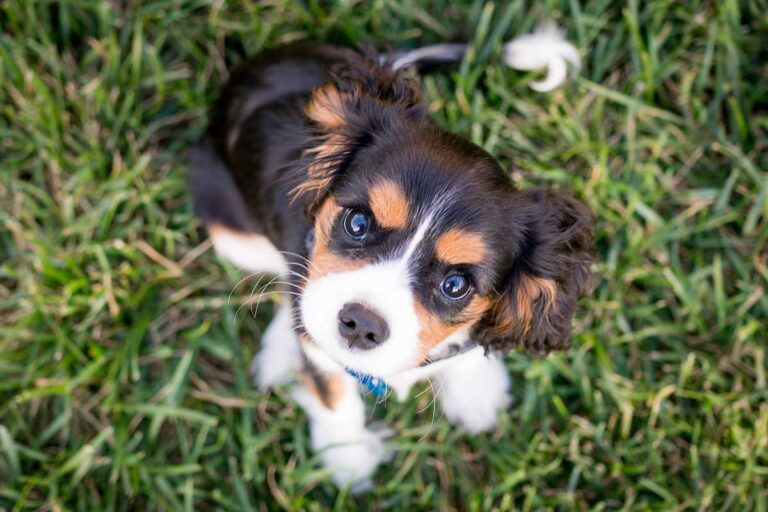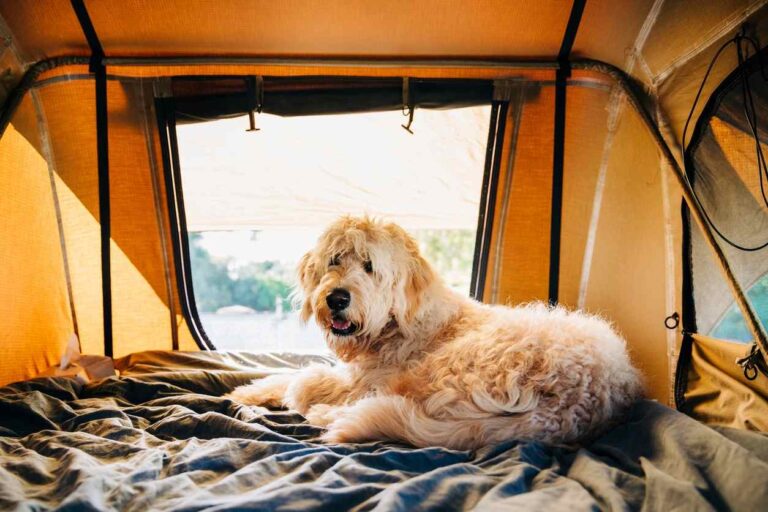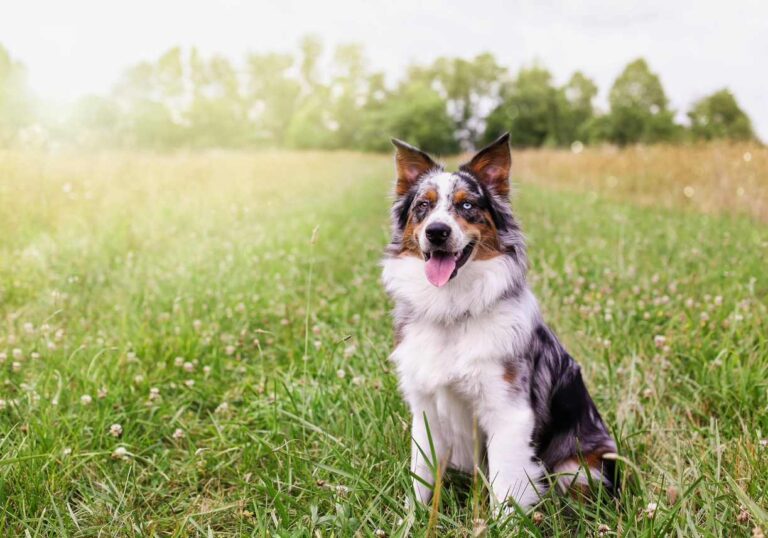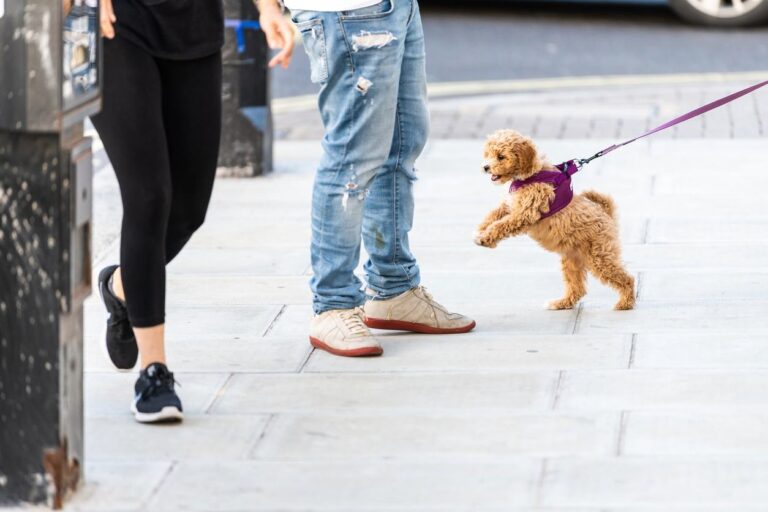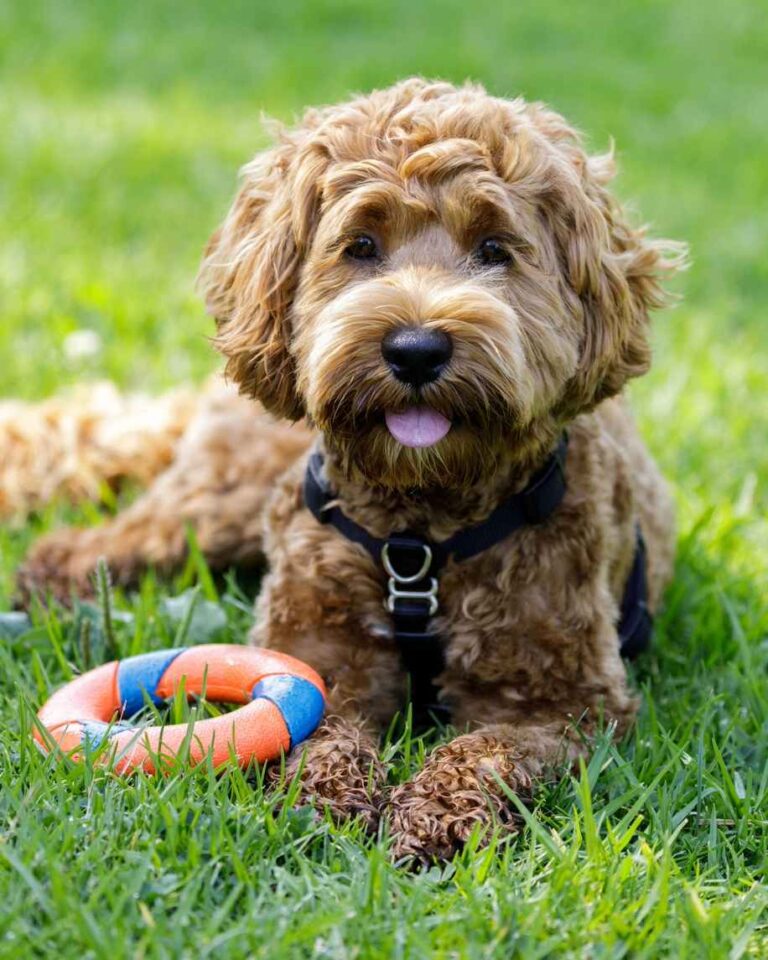Housebreaking your puppy can be done with any breed of puppy at any age. We would recommend that you begin housebreaking your puppy as soon as they come home. The younger your start, the faster your results.
Things you will need to have to get started include:
Kennel/Crate:
A plastic/airline kennel is the safest option in general, however a wire crate will work as long as your puppy isn’t trying to chew the wiring. You will want to keep that divider the kennel comes with. It is super important that your puppy ONLY has enough room in the kennel to stand up, lay down, and turn around comfortably. You can increase the space the puppy has in the kennel as they grow.
Leash:
A flat 6 ft leash is preferable. Your puppy will need to drag a leash at all times so that if they begin to potty in the house, you can immediately and safely take them outside.
Treats:
You will want to have treats on hand or close by to reinforce your puppy going outside to use the bathroom.
Once you have all of these items, and your puppy of course, we break down Potty Training 101 into 4 different topics: 1) Watch and confine/Monitoring your puppy, 2) Food and water schedule 3) Reinforcing pottying outside 4) Accidents
Get rid of ALL potty pads. These tend to encourage your puppy going to the bathroom in the home, and will make it a longer process to potty train them.
1. Watch and Confine – Monitor
Functionally speaking, going to the bathroom is automatically reinforced, which means that anytime your puppy uses the bathroom, it is self-reinforcing. This is why it is imperative when potty training that you monitor your puppy at all times. We follow the rules of a “watch and confine”. To achieve this, your puppy needs to be dragging a leash at all times and in sight. You can also tether them in direct sight of you or use an exercise pen to keep them contained. If you cannot watch your puppy, even if it is only for a moment to go get the mail or to shower, they either need to either come with you, or even better, you can place them into their kennel. This puts you in full control of being able to reinforce their potty routine effectively.
2. Food and Water Schedule
In general if you follow the schedule we provide below, your puppy should be able to hold their bathroom for as many hours as they are old plus one hour. For a smaller breed, just go by the months to hour ratio. So a 3 month old standard goldendoodle on a water and food schedule should be able to stay in their kennel with no accidents for 4 hours. A huge factor in being able to potty train your puppy is to create some predictability and consistency with their bathroom schedule.
To do that, we first recommend not allowing free access to water. Your puppy can have water, however you need to be aware of what that intake looks like so that you can predict when your puppy may need to go next. We recommend placing the water bowl outside (or up on a counter if you are in an apartment) and only allowing your puppy to drink water when you are taking them outside to potty for two reasons: 1) Water stimulates the bladder 2) Your puppy will begin to search out water and ask to go outside to gain access to it, which is the first step in getting them to ask to go outside to use the bathroom. Do not let your puppy tank up on an entire bowl of water unless you can let them back outside within 30 minutes to an hour. A few laps of water when they go outside, and then no water on the way back in will decrease the chances of accidents in the home. In general, if you are going to leave the house, do not give your puppy water within the two hour time frame before leaving. This will help prevent accidents while you’re gone.
For food, general digestion is between 6-12 hours and this increases with age, but keep in mind anytime you feed your puppy, it may stimulate their need to go. We recommend following your vet’s recommendation on how many times per day to feed, however for your first and last meals, you should feed as early as possible, and then as late as possible, no later than that two hour time frame before putting them in the kennel at night. For example, if you go to bed at 10pm, dinner and last chance for water should be at 8pm. Then let them out once more at 10pm and place them in the kennel at night.
Once you are on this schedule, we recommend not letting your puppy out if they cry overnight. Most puppies can hold it for 6-8 hours overnight based on size, and if you are following this schedule, you should not have any overnight accidents.
3. Reinforcing Pottying Outside
When you do take your puppy outside to potty, give them at least 10 minutes to use the bathroom. That way if they get distracted, there is still plenty of time to use the bathroom. When taking your puppy out to the bathroom, we recommend not bringing them around additional stimuli (other dogs, people, etc.) so they are less likely to get distracted for now. Because puppies get so distracted, once they start using the bathroom, do not say anything to or praise them until they have taken at least one step away from after they are finished so you know they are completely empty. Then, offer up big praise and 3 tasty treats. Repeat this every time you go outside with them. If they don’t potty and you know they need to go, place them into their kennel for 20 minutes, then offer them another opportunity to go back outside and relieve themselves. Repeat until the puppy has gone to the bathroom.
4. Accidents
If during your watch and confine you catch your puppy having an accident inside the home, deliver a firm verbal “UH UH UH” and clapping. This needs to happen during the act or no longer than 3 seconds after the act has occurred. If you do not catch them within this time frame, they will not understand what they are being corrected for. Once you do reprimand them, immediately take the leash and take them outside and onto the grass. Once they go, and they step away, offer big praise and 3 tasty treats. Remember that consistency is KEY here, and catching your puppy having accidents in the home is a crucial part of the potty training process.
Final Tips:
When implementing the above strategies, you should maintain these strict protocols until your puppy can go 1 month consecutively without any accidents in the home before providing more freedom. If you have implemented these strategies and you notice your puppy is engaging in the following (urinating in front of you constantly, urinating shortly after they’ve already urinated even with a strict water schedule, urinating frequently/in the kennel with a strict water schedule, etc.) There may be medical reasons involved such as a UTI, and you should have your puppy in that case seen by the vet immediately to assist or rule this out.
If you’d like more information or direct help from one of our trainers and behavior consultants, you can contact us directly here. We also offer both private in-home puppy sessions and board and train options that can offer more in person and hands on advice. Happy potty training!
